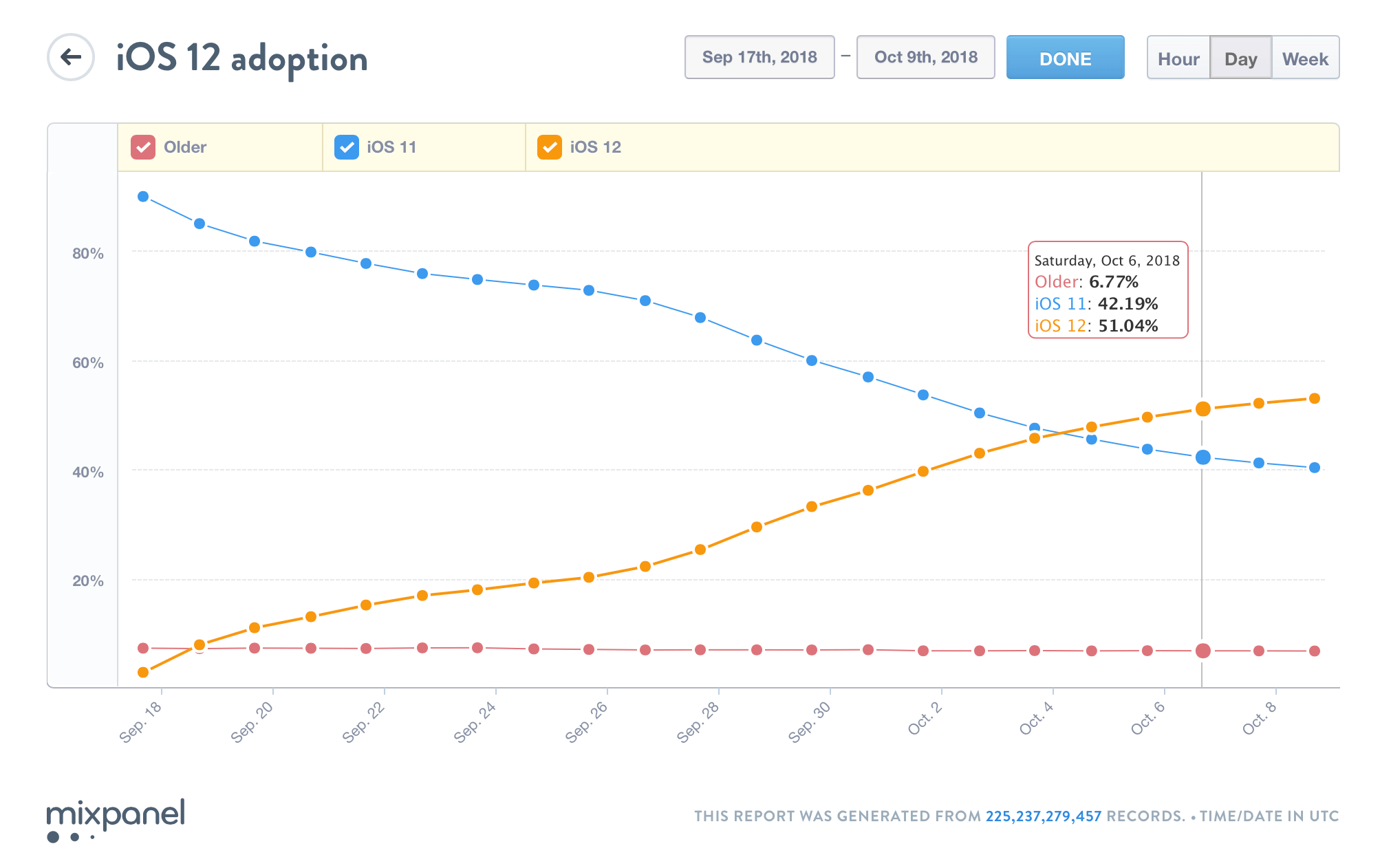13's blog
iOS 12 Adoption
Now that iOS 12 has been released for three weeks, let’s take a look at its adoption.

The table lists how many days does each version (since iOS 7) took to passed 25%, its previous version, 50%, and 75%. The Final% means its adoption date at the day its next version released.
| Version | Release | 25% | Cross | 50% | 75% | Final % | Source |
| iOS 12 | 2018/9/17 | 6️⃣ +10 | 4️⃣ +17 | 4️⃣ +19 | ? | ? | 📈 |
| iOS 11 | 2017/9/19 | 5️⃣ +7 | 5️⃣ +20 | 5️⃣ +26 | 4️⃣ +90 | 🥉 90.81% | 📈 |
| iOS 10 | 2016/9/13 | 4️⃣ +4 | 🥉 +16 | 🥉 +18 | 🥉 +89 | 🥈 91.27% | 📈 |
| iOS 9 | 2015/9/16 | 🥈 +3 | 🥈 +8 | 🥈 +11 | 🥈 +68 | 5️⃣ 86.36% | 📈 |
| iOS 8 | 2014/9/17 | 🥈 +3 | 6️⃣ +27 | 6️⃣ +32 | 5️⃣ +146 | 4️⃣ 90.50% | 📈 |
| iOS 7 | 2013/9/18 | 🥇 +1 | 🥇 +3 | 🥇 +3 | 🥇 +33 | 🥇 95.06% | 📈 |
Data collected from Mixpanel Trends.
iOS 12
- 2018/09/17: Official released
- 2018/09/27: Passed 25% after 10 days. The slowest since iOS 7 🙃
- 2018/10/04: Passed iOS 11 after 17 days. It’s the 4️⃣th since iOS 7
- 2018/10/06: Passed 50% after 19 days. Also the 4️⃣th
There are numerous factors contributing to the trends and I don’t plan to discuss here. However, while iOS 12 is probably the most stable version in recent years, its adoption rate is not growing the fastest compared to iOS history. It’s still remarkable that an OS with this large user base has half user upgrade within three weeks.